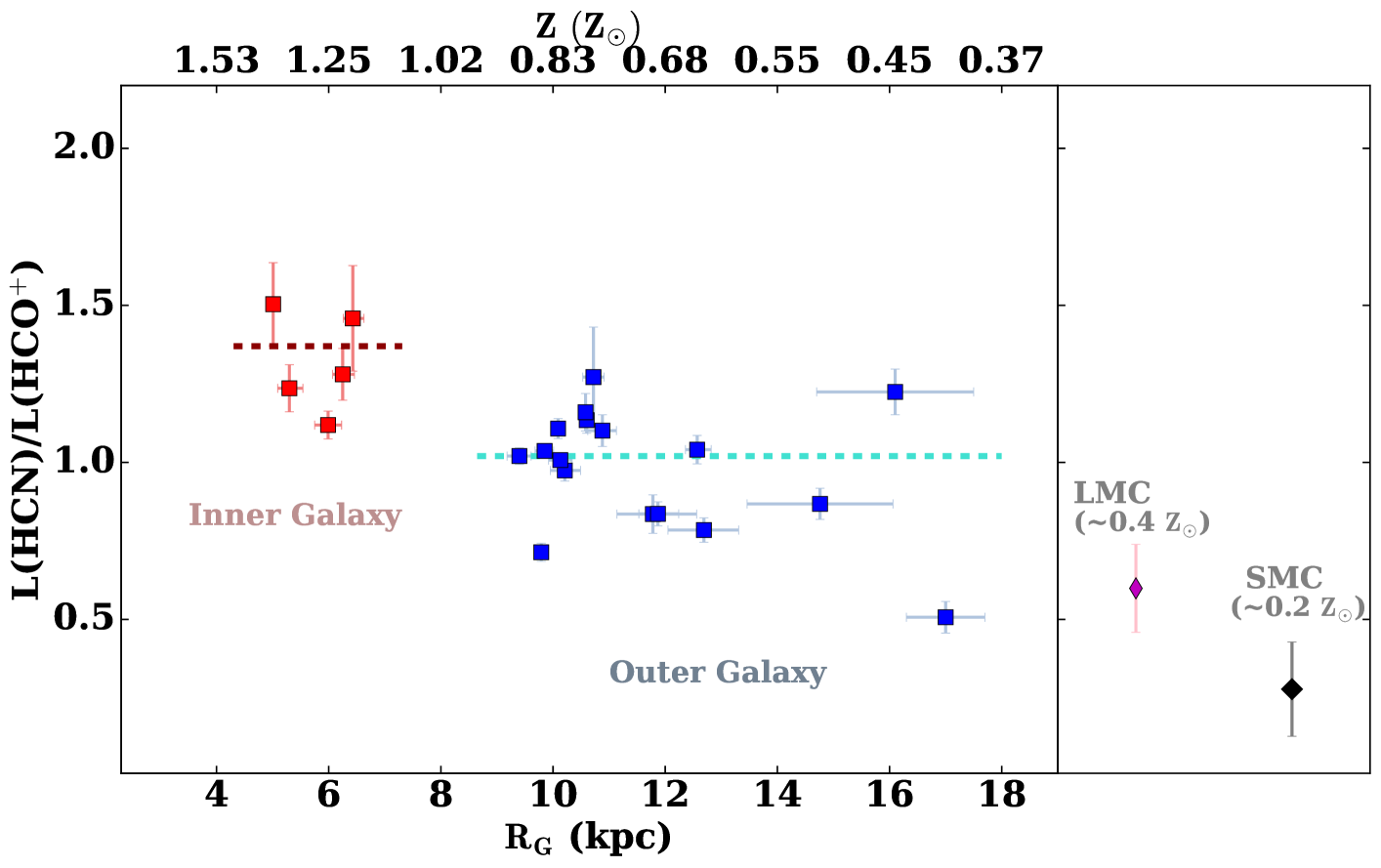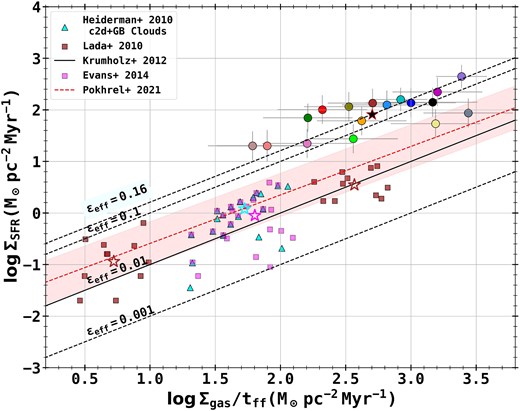Welcome
I am a faculty at the Physical Research Laboratory (PRL), seeking answers to some fundamental questions such as how and where do stars or cluster of stars form in the Universe, and how these stars influence the interstellar medium and regulate the star formation processes of the host Galaxy.
I look to the above problems with astronomical observations using ground and space observatories in a huge range of wavelengths. In particular, I use telescopes observing in the radio, millimeter, infrared, and optical domain to get information about the stars, and the gas and dust associated to them. You can find more details on my work on my research page and all my publications can be found on my publication page.Recent Results

|
Variation of Dense Gas Mass-Luminosity conversion factor with metallicity in the Milky Way
In a recent study, we investigated the effect of metallicity on the mass-luminosity conversion factor derived from HCN and HCO+, which are commonly used tracers of dense gas. Our analysis revealed substantial variation in the abundance ratio of these tracers with metallicity, as well as across the galactocentric radius. We discuss the implications of these results in gas mass estimation and its potential role in explaining the observed low star formation efficiency in the central molecular zone of our Galaxy. For details see Patra et al. 2024, arXiv:2503.07931 Posted March 19th, 2025 |

